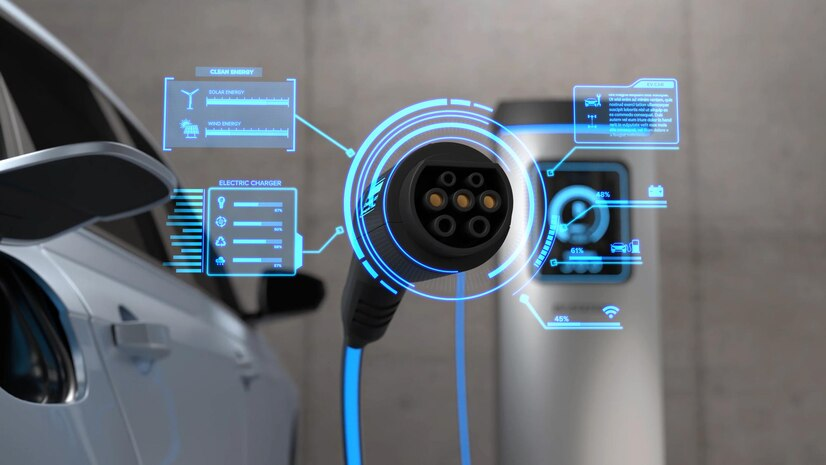The Transformative Role of AI in Revolutionizing EV Charging Networks
As electric vehicles (EVs) gain traction globally, effectively managing EV charging networks has become paramount for ensuring reliability, profitability, and scalability—while simultaneously supporting economy-wide decarbonization goals.
Artificial intelligence (AI) is playing a crucial role in this transformation by enhancing forecasting accuracy, optimizing operations, and enabling data-driven decision-making for charge point operators (CPOs).
Leveraging AI taps into vast datasets generated by edge computing and the Internet of Things (IoT), opening doors to groundbreaking advancements in EV charging infrastructure.
From addressing network reliability to improving resource allocation, AI is instrumental in:
- Enhancing network reliability and stability through self-healing algorithms.
- Strategically deploying charging stations based on predictive analytics.
- Accurately forecasting charging demand to reduce congestion.
- Optimizing charging schedules for cost efficiency and grid stability.
- Expanding public access to charging assets for underserved communities.
AI-powered systems analyze diverse data inputs—such as weather patterns, renewable energy availability, load demand, and real-time charger statuses—to identify optimal charging scenarios.
These insights drive improvements in customer engagement, operational efficiency, and overall grid stability, alleviating station congestion and reducing strain on electricity infrastructure.
With AI, CPOs can streamline operations, accelerate EV adoption, and boost profits while contributing to cleaner transportation.
Challenges in EV Charging Networks
Despite progress, several challenges continue to hinder EV charging accessibility and reliability. These challenges create hurdles for drivers and CPOs and underscore the urgent need for innovative solutions:
Charge Port Reliability: Research from Harvard indicates that public EV charge ports are less reliable than traditional gas pumps. Insufficient data is the main culprit, resulting in driver “charge anxiety.” Addressing these reliability issues is critical for encouraging widespread EV adoption.
Inconsistent Pricing: The aforementioned study also highlights the lack of consistent pricing across charging networks, leaving customers unable to make informed decisions. Transparent pricing is a necessity for providing better experiences and building trust.
Load Demand and Grid Management: EV charging stations operate at the “grid edge,” where centralized energy systems meet decentralized power generation and consumption. Without real-time data insights, CPOs struggle to predict load demand impacts, potentially overwhelming already strained grids.
Equity in Charger Access: According to Pew Research, while 60% of Americans live within two miles of a public EV charger, the remaining 40%, particularly suburban and rural residents, face accessibility challenges. Nearly 90% of charging stations are concentrated in urban areas, further emphasizing the need to expand infrastructure equitably.
While these obstacles are substantial, AI-powered solutions offer transformative opportunities to address these issues, turning challenges into drivers of innovation and growth.
Why AI is Essential for Optimizing EV Charging Networks
AI is essential for tackling key difficulties in EV charging networks. Its ability to analyze large amounts of data in real time enables better utilization of existing grid resources while paving the way for broader electrification. This is critical for achieving decarbonization targets by 2050.
Load Balancing, Charge Time Optimization, and Smart Grid Integration
AI empowers CPOs with actionable insights concerning the grid’s condition, charger statuses, and electricity rates. By leveraging time-of-use (ToU) rates, AI optimizes charging schedules to reduce costs and improve resource utilization.
This enables better planning for EV drivers and operators, leading to more consistent day-ahead or intra-trip charging plans.
Additionally, AI facilitates the integration of renewable energy sources by analyzing fluctuating grid conditions and adapting charging demand across multiple stations.
By mitigating grid overload, reducing charger downtime, and boosting throughput, AI improves reliability for customers and scalability for networks.
Reducing Costs and Improving Customer Experience
AI helps preemptively identify and address charger-related issues remotely, resolving up to 80% of problems without costly site visits.
This reduces downtime, eliminates inconveniences for drivers, and improves operational efficiency for CPOs. These advancements reduce total cost of ownership (TCO) while enhancing customer satisfaction and throughput.
AI-driven insights also revolutionize the customer experience by delivering personalized services. AI can accurately predict charger availability, pricing, and customer preferences, facilitating seamless interactions and transactions.
Through historical usage data analysis, AI anticipates customer needs, reduces congestion, and fosters loyalty, leading to long-term business growth.
Enhancing Renewable Energy Integration
The integration of renewable energy into EV charging networks is critical for a sustainable future. AI plays a pivotal role by enabling smart energy management systems and flexible sector-coupling technologies such as Vehicle-to-grid (V2G).
These solutions transform EV batteries into distributed energy resources (DERs), which can store excess renewable energy, mitigate blackouts, and stabilize electricity supply.
AI helps pinpoint complex patterns in electricity demand and weather forecasts, improving load management and reducing the curtailment of renewable energy.
As grids encounter increasingly unpredictable conditions, AI continuously adapts, ensuring the reliability needed for widespread EV adoption and smart grid development.
Addressing Charger Equity and Expanding Access
AI can also help solve disparities in charging infrastructure access for rural and underserved communities. By analyzing socio-economic factors and usage patterns, AI enables CPOs to strategically deploy chargers at optimal locations, ensuring equitable access for all.
Additionally, AI-informed pricing schemes take advantage of lower ToU rates in rural areas to offer cost-effective charging solutions.
Rural regions often experience simpler electricity demand patterns due to fewer peak periods compared to urban centers, making them ideal candidates for straightforward and affordable charging structures.
AI collates these insights to create inclusive, profitable charging networks that benefit EV drivers across socio-economic divides.
Conclusion
As EV adoption continues to rapidly outpace infrastructure development, AI emerges as a critical enabler for building robust charging networks.
By optimizing operations, facilitating renewable energy integration, and improving accessibility for drivers, AI empowers CPOs to achieve scalable electrification without the need for significant capital expenditures.
With AI's foresight and capabilities, EV charging networks are poised to meet the needs of drivers, businesses, and the broader electricity grid—paving the way for a sustainable and decarbonized transportation future.



Post a Comment